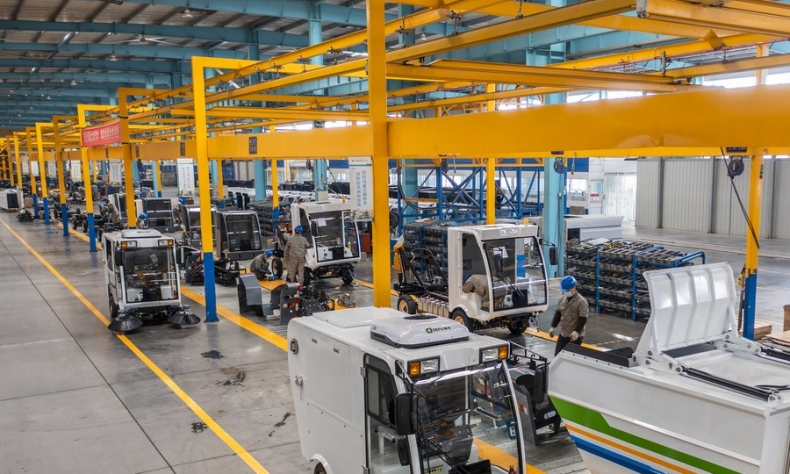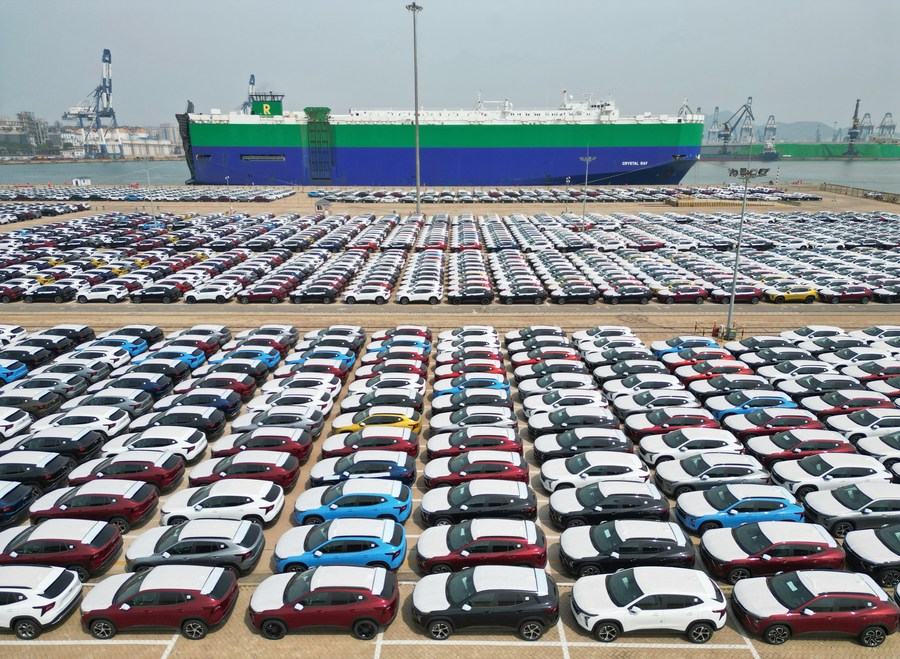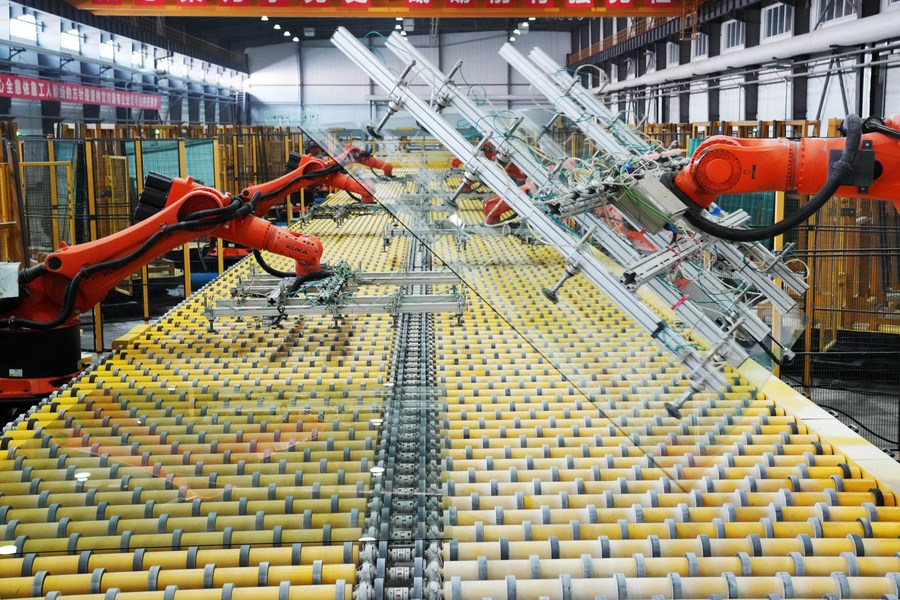Economic Upturn Boosts Confidence

Expanding innovation capacity, coupled with a vast consumer market, a complete industrial system, and deepening reform and opening-up, is shoring up China’s robust rebound.
As the eventful year of 2023 drew to a close, China’s robust economic rebound over the preceding 11 months continued to propel steady recovery of the flagging global economy.
Last November, China’s retail sales of consumer goods – a major gauge of consumption strength – maintained accelerated growth, evident in a registered year-on-year increase of 10.1 percent, according to National Bureau of Statistics (NBS) data published on December 15. During the January-November period, moreover, total retail sales of the country’s consumer goods swelled to RMB 42.79 trillion – a 7.2 percent increase over the previous year.
November also witnessed a 9.3 percent year-on-year increase in China’s service production index, a more detailed analysis of which reveals that this was due largely to the hospitality industry’s sizable growth of 30.6 percent, transportation, warehousing and postal services having achieved 15.1 percent growth. Information transmission, software, and IT services, meanwhile, saw an impressive 13.3 percent surge in growth.
Having upgraded its GDP growth forecasts for China from 5.0 percent to 5.4 percent in 2023 and from 4.2 percent to 4.6 percent in 2024, the International Monetary Fund (IMF) voiced its expectation, based on current forecasts last December, that the Chinese economy would “meet the government’s 2023 growth target of around 5 percent, and this reflects the post COVID recovery.”
The country’s economic recovery so gathered pace toward the end of 2023, during which many international financial institutions similarly upgraded their GDP growth forecasts for China. And the country did indeed achieve 5.2 percent growth year on year in the first three quarters. These prominent bodies included UBS Group AG, whose original forecast was 4.8 percent; Deutsche Bank, which forecast growth of 5.1 percent; and JPMorgan Chase & Co. which forecast a 5 percent growth; all three of whom respectively adjusted their forecasts to 5.2 percent, year on year. China’s economic indexes, in regard to manufacturing, services, consumption, and investment, meanwhile, continued steadily to improve.

Despite China’s robust recovery and rosy economic prospects in the real world, however, certain Western media persistently dwelt on and exaggerated the country’s dipping consumption demand, embodied in a slight decline of Consumer Price Index (CPI) by 0.5 percent, and of Producer Price Index (PPI) by 3.0 percent, year on year last November. Certain media reports nonetheless conjured up from these figures imminently gloomy worst scenarios. But China’s 5.2 percent growth in the first three quarters of 2023 – the strongest performance among world major economies – seems far removed from the so-called “slowdown” augured by certain Western media. Global investors’ confidence in the Chinese market, evidenced in their beefed-up investment, was also a forceful rebuttal to such dark forebodings and denigration.
German carmaker Volkswagen Group announced recently that it will develop a new platform for entry-level electric vehicles, using local components in models specifically tailored to Chinese consumer tastes. It is expected to be ready for the market in 2026. Volkswagen (China) Technology Co., Ltd., the group’s Chinese company and largest research and development center outside its German headquarters with an approximate total investment of €1 billion, plans to begin operations in early 2024 in Hefei City, east China’s Anhui Province.
A survey by the German Chamber of Commerce in China showed that over half of the 288 German companies surveyed plan to increase their investment in China over the next two years in order to maintain their competitive edge in the world’s second largest economy, according to Xinhua.
Steven Barnett, the IMF’s senior resident representative in China, recently remarked that China was still the biggest engine of global economic growth in 2023, contributing one-third of global economic growth. “When China grows faster, it really provides a welcome lift for the whole world,” Barnett told Xinhua in an interview.
However, uncertain global situations punctuated by regional conflicts and rising geopolitical tensions generate external pressure on China’s economy. The country also faces the challenges of insufficiency of effective demand, overcapacity in certain sectors, and weak social expectations. On the whole, however, the fundamental trend of the country’s economic recovery and long-term positive outlook has not changed, according to the Central Economic Work Conference held in Beijing last December 11-12, and favorable factors outweigh unfavorable ones. The annual conference set the tone for China’s economic work in 2024, while at the same time reviewing economic work in 2023, analyzing the country’s current economic situation, and setting out priorities for the coming year.

The meeting called for efforts in 2024 to pursue progress while ensuring stability, to consolidate stability through progress, and to establish the new before abolishing the old. To achieve high-quality development, the conference highlighted nine key tasks in the country’s economic work in 2024. They comprise technological innovation, domestic consumption, reform in key sectors, risk prevention, agriculture, coordinated regional development, low-carbon development, and improving people’s livelihood.
Particularly noteworthy about the Central Economic Work Conference is that it made sci-tech innovation the top economic task for 2024. Tian Xuan, vice president of the Tsinghua University PBC School of Finance, called the arrangement a “precise, strategic judgment,” based on a comprehensive evaluation of China’s economic development progress as the country transitions to an innovation-driven development mode. By 2023, China’s ranking on the Global Innovation Index of the World Intellectual Property Organization had risen to 12th, as compared to 35th in 2013.
Last November, moreover, China’s high-tech manufacturing posted a 6.2 percent increase in industrial output, up 4.4 percentage points from October. The upward trend in the output of such high-tech products as solar cells, which soared 44.5 percent; robots, which rose 33.3 percent; and integrated circuits, which went up 27.9 percent, also continued last November.
Expanding innovation capacity, coupled with a vast consumer market, a complete industrial system, and deepening reform and opening-up, is shoring up China’s robust rebound. The country is thus well-positioned to achieve 2023 growth targets, and on a solid footing for a new takeoff in 2024.
 Facebook
Facebook
 Twitter
Twitter
 Linkedin
Linkedin
 Google +
Google +










